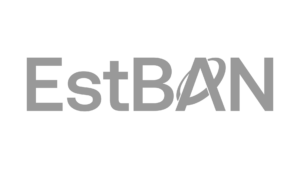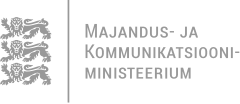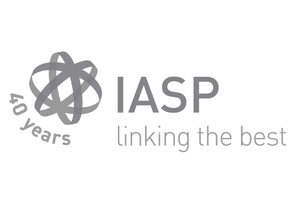21.03.2018
Solution promoting the rehabilitation of COPD patients helps them better cope with their disease
The “Breathe and Move” solution has been developed to promote the rehabilitation of COPD patients, that is, to help them get into the habit of doing various exercises at home and stick to a routine.
Tarvo Tamm, project manager from MotionChart technology company, recalls that at the COPD IN FOCUS hackathon doctors repeatedly highlighted the role of pulmonary rehabilitation in helping COPD patients better cope with their condition. However, such options are often unavailable to patients – although they should be more widely accessible – and this is why stakeholders were interested in resolving the problem using digital solutions.
There are several reasons behind rehabilitation services being largely unavailable. “Many patients have reduced mobility and others who are in later stages of the disease are simply not able to use outpatient physiotherapy services. Another issue is that hospitals simply don’t provide long-term, systematic rehabilitation, which means that patients have to do various exercises – breathing exercises, exercises for lung cleansing, aerobic training and strengthening muscles – independently, at home,” says Tamm and points out that when patients are left on their own in coping with many tasks, some are irregular about their routine, while others do the exercises incorrectly. “A patient support service would certainly help to improve the situation,” notes Tamm.
Currently, newly diagnosed COPD patients get to have one or two visits with a physiotherapist who shows them the exercises and gives them a leaflet to take home. There is no arrangement in place for regular appointments and just a few visits is not enough to develop a routine. That’s why stakeholders want to test whether a remote service would help to create and maintain such a routine.
Dr. Ülle Ani from the Lung Clinic of Tartu University Hospital compares the daily regimen of a COPD patient with that of a professional athlete – both work out to improve their physical stamina. While COPD patients train at a much lower intensity, working out is vital for them to be able to build up their activity level and carry on with their daily tasks without shortness of breath. Workout sessions and other forms of physiotherapy improve their quality of life and confidence as well as encourage them to get out and about. It is known that many COPD patients “owe” their deteriorating health to passively sitting (or lying) in front of a TV set, which is why we chose to make the remote service available through this device.
The solution is targeted at all COPD patients irrespective of the severity of their condition. “Above all, it is important to make sure that patients are well equipped to cope with lack of oxygen and know how to use appropriate breathing techniques. It is vital for all COPD patients, regardless of the stage they are in, to maintain their aerobic capacity as well as good overall fitness,“ says Tamm. When patients are able to manage their condition independently, they can lead a relatively active life in the early stages of the disease. For example, they can hold a job. Regularly working out helps patients whose condition is more severe cope with the disease independently for longer. Moreover, another significant aspect is the financial one – patients being able to cope well on their own translates into more healthcare cost savings.
Exercises for patients
“As we were trying to come up with a suitable solution, we realised that when it comes to remote services, choosing the right kind of technical solution to offer the service to patients and to keep them motivated plays a crucial role. That’s how we came across an environment developed by Sentab, or an application which makes it possible to consume content and, for example, make video calls by using a device connected to a TV set. Watching television is something everybody does, and we wanted to make consuming novel content as easy, involving and familiar as possible. When using our solution, patients can watch on the TV how to perform a set of exercises adapted to their individual needs and copy them,” explains Tamm.
The Sentab device is used to prepare a daily routine for the patient, including a set of exercises. Exercises are demonstrated by practising physiotherapists and pulmonologists, and are adapted to the patients’ individual needs. “The application has an integrated feedback option to enable forwarding patient data to physiotherapists. For example, data on saturation and activity level. This provides therapists with a weekly overview of the situation and, if needed, they can make changes to the routine,” says Tamm.
A COPD patient and a physiotherapist hold an interactive video session once a week and, if needed, the patient also has a teleconsultation with a pulmonologist.
At the moment, 59 videos are available which can be divided into three groups in terms of their content. First, videos covering the theoretical part help the patient to understand the mechanisms at work in COPD: what causes lack of oxygen and how exercising can help them cope with the disease. Second, there are videos on various aids and techniques that can be used additionally and third, a selection of exercise tutorials.
What’s next
Currently the project is in a phase where the solution’s content is ready and the next step involves testing with real patients. Stakeholders are looking forward to the patients’ initial user experience. Then, the service should be made available to a larger target group for the purpose of gathering reference data and assessing its outcomes.
“There is interest to continue work on the solution and we have already discussed potential development as well as financing options,” says Tamm optimistically.
The “Breathe and Move” solution team: Dr. Ülle Ani (Lung Clinic of Tartu University Hospital), Tarvo Tamm (MotionChart), Katrin Kõre (North Estonia Medical Centre), Mall Maasik (Sentab), Laura Grigorjan and Villem Nilbe (Tartu Health Care College).

















